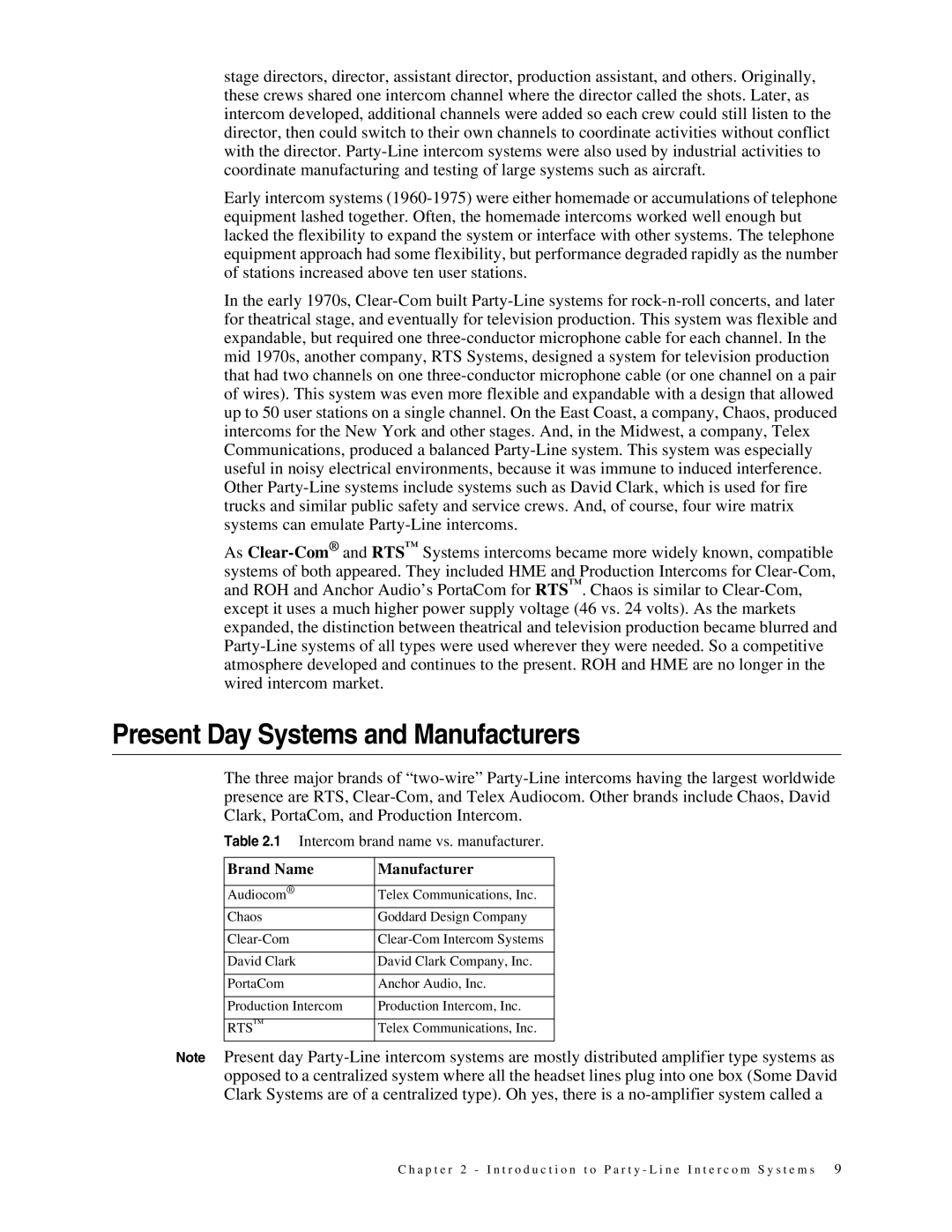stage directors, director, assistant director, production assistant, and others. Originally, these crews shared one intercom channel where the director called the shots. Later, as intercom developed, additional channels were added so each crew could still listen to the director, then could switch to their own channels to coordinate activities without conflict with the director. Party-Line intercom systems were also used by industrial activities to coordinate manufacturing and testing of large systems such as aircraft.
Early intercom systems (1960-1975) were either homemade or accumulations of telephone equipment lashed together. Often, the homemade intercoms worked well enough but lacked the flexibility to expand the system or interface with other systems. The telephone equipment approach had some flexibility, but performance degraded rapidly as the number of stations increased above ten user stations.
In the early 1970s, Clear-Com built Party-Line systems for rock-n-roll concerts, and later for theatrical stage, and eventually for television production. This system was flexible and expandable, but required one three-conductor microphone cable for each channel. In the mid 1970s, another company, RTS Systems, designed a system for television production that had two channels on one three-conductor microphone cable (or one channel on a pair of wires). This system was even more flexible and expandable with a design that allowed up to 50 user stations on a single channel. On the East Coast, a company, Chaos, produced intercoms for the New York and other stages. And, in the Midwest, a company, Telex Communications, produced a balanced Party-Line system. This system was especially useful in noisy electrical environments, because it was immune to induced interference. Other Party-Line systems include systems such as David Clark, which is used for fire trucks and similar public safety and service crews. And, of course, four wire matrix systems can emulate Party-Line intercoms.
As Clear-Com®and RTS™ Systems intercoms became more widely known, compatible systems of both appeared. They included HME and Production Intercoms for Clear-Com, and ROH and Anchor Audio’s PortaCom for RTS™. Chaos is similar to Clear-Com, except it uses a much higher power supply voltage (46 vs. 24 volts). As the markets expanded, the distinction between theatrical and television production became blurred and Party-Line systems of all types were used wherever they were needed. So a competitive atmosphere developed and continues to the present. ROH and HME are no longer in the wired intercom market.
Present Day Systems and Manufacturers
The three major brands of “two-wire” Party-Line intercoms having the largest worldwide presence are RTS, Clear-Com, and Telex Audiocom. Other brands include Chaos, David Clark, PortaCom, and Production Intercom.
Table 2.1 Intercom brand name vs. manufacturer.
Brand Name | Manufacturer |
| |
Audiocom® | Telex Communications, Inc. |
Chaos | Goddard Design Company |
| |
Clear-Com | Clear-Com Intercom Systems |
| |
David Clark | David Clark Company, Inc. |
| |
PortaCom | Anchor Audio, Inc. |
| |
Production Intercom | Production Intercom, Inc. |
| |
RTS™ | Telex Communications, Inc. |
Note Present day Party-Line intercom systems are mostly distributed amplifier type systems as opposed to a centralized system where all the headset lines plug into one box (Some David Clark Systems are of a centralized type). Oh yes, there is a no-amplifier system called a
